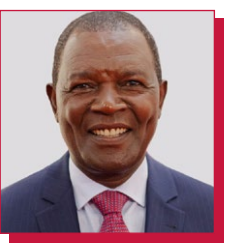Economy 2023: How Kenya is preparing for global economic shocks

In the last few years, the global economy has been trying to cope with multiple shocks and economic uncertainties. This has been elicited by the Covid-19 pandemic, political instability, climate change induced shocks and international conflicts. These effects may not end soon and have provided strong pointers for the year 2023, that it is likely to be the most difficult for the global economy, in terms of economic recovery.
The projected 2023 economic growth outlook has been attributed to multiple factors including the ongoing Russia-Ukraine conflict, that will consequently continue to affect the global supply chains, causing supply disruptions, surge on inflation and incomes for exporters in the region.
Most of the low-income countries have already been affected by these factors and others including surges in food and commodity prices, devastating effects of climate change, debts and limited access to foreign finance. These negative economic effects have not left out both middle and high-income economies, where a combination of factors are also hitting hard on the cost of living.
According to the World Bank, the world’s poorest countries have been spending the highest share of their revenues on debt-service payments. Debt-related risks are increasing for low and middle-income economies.
It is against this backdrop that the Government of Kenya will pursue fiscal consolidation to ensure debt sustainability. This involves gradual reduction of the overall fiscal deficit and the pace of debt accumulation over the medium-term as well as an effective liability management strategy. The policy will be supported by enhanced revenue mobilization and instituting austerity measures on non-priority recurrent expenditure as well as redirecting resources to finance priority growth-supporting programmes.
The latest IMF forecast shows that Global growth is estimated to slow from 3.2% in 2022 to 2.7% in 2023. Emerging Market and Developing Economies growth is projected at 3.7%, Advanced Economies growth is projected at 1%, Euro Area growth is projected to come in at 0.5%, China’s economy is forecast to grow 4.4% and Emerging Market growth is forecast at 2.9% in 2023 while Sub-Saharan Africa (SSA) growth is projected to be 3.7% (Analytical work can compare this growth of 3.7% in SSA with population growth to show the impact on per capita income growth on one and on the other compare this growth with real interest on debt contracted).
In Kenya, food security and climate change have led to severe crises – increased poverty, widening inequality across regions and households and increased incidences of social conflicts due to competition for resources, like water. This has been compounded by the supply disruptions, inequality, poverty and social conflicts. The country’s FY2023/24 Medium- Term Budget is being prepared against that background.
Kenya’s economy is projected to grow by 5.5 percent in 2023 and above 6.0 percent over the medium term. This growth will be reinforced by the Government’s Bottom-Up Economic Transformation Agenda geared towards economic turnaround and inclusive growth. Avenues of inclusive growth include creating jobs and agro-processing for export. This can only work if markets are properly governed.
The Bottom-up Approach to economic management will drive the economic recovery agenda that will emphasize several dimensions to support the country’s economic recovery. Three examples: First, to protect private investments, targeted at human capital development: these include health, education and nutrition. Human capital development is an important element to drive inclusive development.
Second, the government to develop, regulate and protect markets. Well governed markets will ignite and increase production and productivity downstream and increase incomes upstream. This applies to all sectors of the economy. It is in markets where economic rents are shared and distributed. This is the essence of The Bottom-up Approach.
Finally, the digital solutions will also create a platform for the government to enhance efficient and effective services to the public.
The Bottom-Up Economic Transformation Agenda will seek to increase investments in at least five sectors envisaged to have the largest impact on the economy as well as on household welfare. These include Agriculture, Micro, Small and Medium Enterprise (MSME), Housing and Settlement, Healthcare and Digital Superhighway and Creative Industry.
The government has in this regard launched the Hustlers Fund, as an intervention to correct market failure problems at the bottom of the pyramid. This program aims to lift those at the bottom of the pyramid through structured products in personal finance that includes savings, credit, insurance and investment in the past interventions moved up the Microfinance Institution (MFIs).
As we prepare FY 2023/24 and the medium term, emphasis will be on aggressive revenue mobilization including policy measures to bring on board additional revenue. The strong outcome in revenue collection in the FY 2021/22 offers a strong base for supporting the expenditure estimates.
The National Treasury has therefore initiated the development of the Medium-Term Revenue Strategy (MTRS). Based on the county governments’ fiscal performance in the FY 2021/22, county governments are also expected to put measures in place to address the following: optimization of Own Source Revenue collection; adherence to fiscal responsibility principles; and clearance of pending bills.
The Writer is the Cabinet Secretary for the National Treasury and Economic Planning, Kenya.

